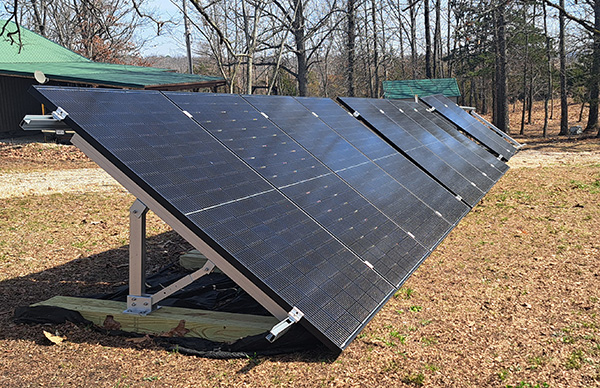We finally got all our Solar Panels, Racking, Wiring, Inverter, and Battery hooked up in just a few days we are producing power. I will be showing everything we used and how it was done. The biggest surprise was the savings on how much this costed and how we can expand in the future. This setup is actually a Do It Yourself setup. Simply isn’t much to it. If you have questions on any part of it; our videos or posts should cover it. At first I thought hooking all this up was for a seasoned professional but that is not the case. Every part of this Solar Power setup is upgrade-able for the future. The entire system can be doubled giving 6000 watts with 240 volts with just an extra cord that was provided for Parallel and setting everything up.
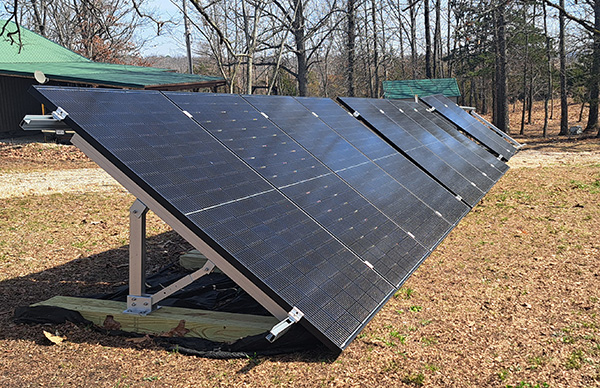
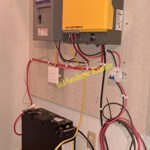
In the previous posts, we showed the items we were going to purchase. Ended up buying the Silfab 380 watt Solar Panels and they are producing more on a cloudy day in March than they are advertised. Very happy with them so far.
We mounted the solar panels on the EG4 Brightmounts. The Silfab 380 watt panels fit four on each rack. Other solar panels I looked at would only fit three per rack. Overall the EG4 Brightmount rack was easy to setup and place the panels on. Instead of concrete pillars we used 4x4x8 Pressure treated lumber to mount the panels on. Mounted them with 3/8ths x 4″ Lag screws. The mounts are wider than a 4×4 so we cut them in half and mounted the EG4 Foot plate to two of them side by side. A 6x6x8 was my original thought but there was none to be found in my town. Did not mount them in the center because the wind would catch the back side more and the back edge of the plate was 20 inches from the NORTH Side of the 4×4’s. We had 80mph winds the same week as they were setup and I watched the carefully from the window and never seen any movement!
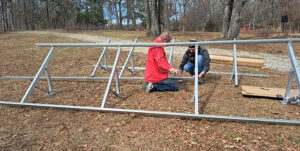
Since EG4 3000-EHV is capable of 5000 watts input we hooked the panels in series and used an inline 30 amp fuse before going to the disconnect box. My panels are 380 watts and 15.5 Amps. When running in series; the Amps remain the same. Since there is 10 panels and 380 watts each; that equals 3800 watts. This allows number 10 AWG Wire to be used on this 90 foot run. Connecting them up in series by making sure each panel was placed positive to negative on the next allowed no extra wiring and MC4 Connectors. Simply plug in one panel to the next. Since they come with MC4 Connector ends they cannot be messed up as the positive and negative have male and female ends.
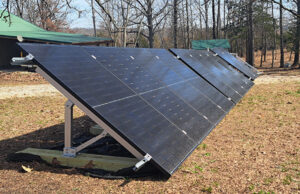
Ran number 10 AWG PV wire from the IMO Disconnect Box at the panels to the EG4 3000EHV Inverter. Did add a 500 volt breaker before the inverter as shown. One inch conduit was more than I needed but plans of running two more wires through it are in future plans. Note; The IMO Disconnect box pictured is now setup with conduit into it. When I took the picture we were still waiting on simple parts our town did not have.
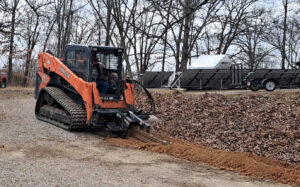
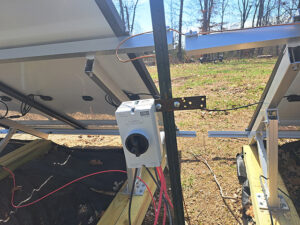
Connected the EG4-LL V2 48 Volt Battery to the EG4 3000 Inverter. Added a Breaker box to the side with outlets below. Will be running wires from that box to a Transfer Switch at my main breaker panel of the house. This certainly gives enough power to run my refrigerator, freezer, lights, computers, TV, and chargers with room to spare. Be careful when picking a transfer switch if you go that route. Some best selling on Amazon may have 10 switches to go from Grid to Solar but are rated at 30 amps Total; not just one space. Thought I would share that because they have multiple 20-30 amp breakers on each switch but the maximum it can handle in total is 30 amps.
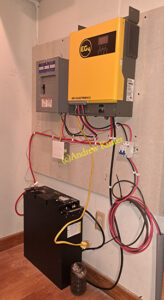

Do make sure to Ground the system properly. We have electric coming in our home from the grid. It is grounded at the pole. Grounding the EG4 Inverter was done through the 120v outlet below it that is connected to the main panel. Not the best but will be changing it likely when adding the transfer switch. Just run the main panel ground to the bottom of the inverter ground screw. That way the outlet does not need to be plugged in the whole time. A electrician can easily tell you the proper way at no or little cost if you are unsure. Every place has different building codes and requirements. We are in a rural area with basically none besides don’t back feed onto the grid which this setup cannot do.
Hope this post gives a brief overview of how we setup our solar power system. See video below for how everything was done or CLICK HERE.
